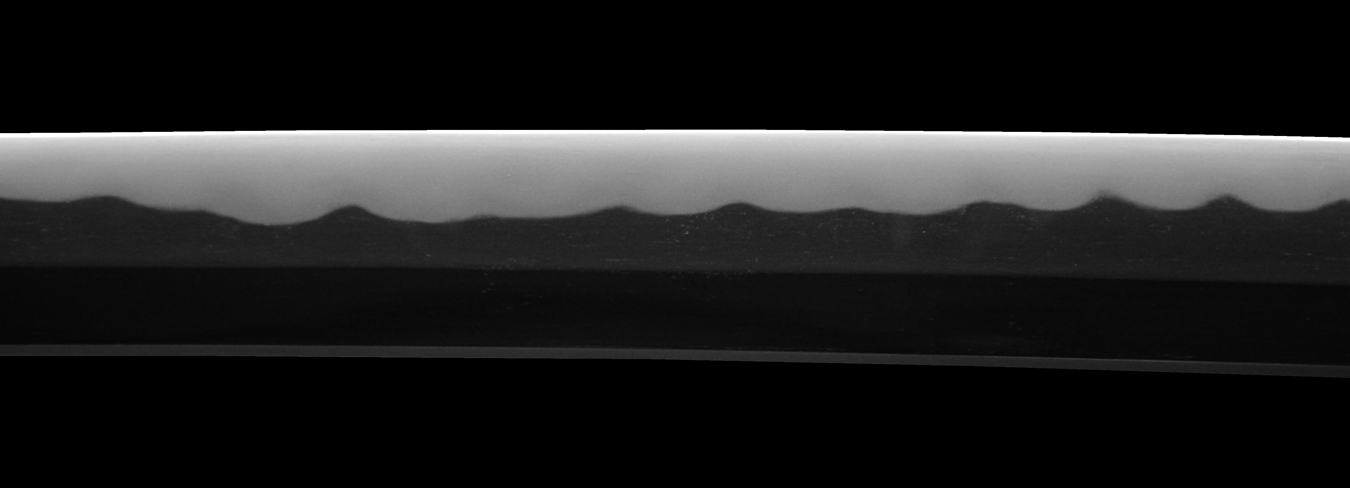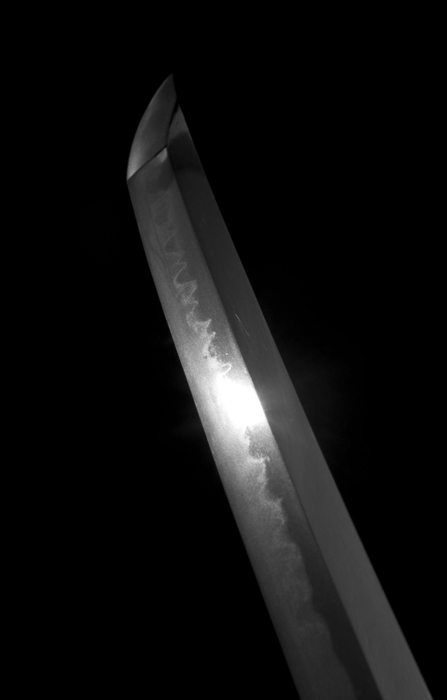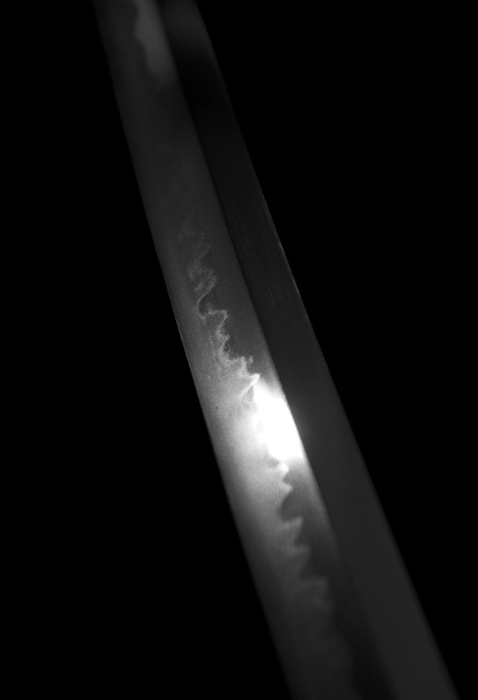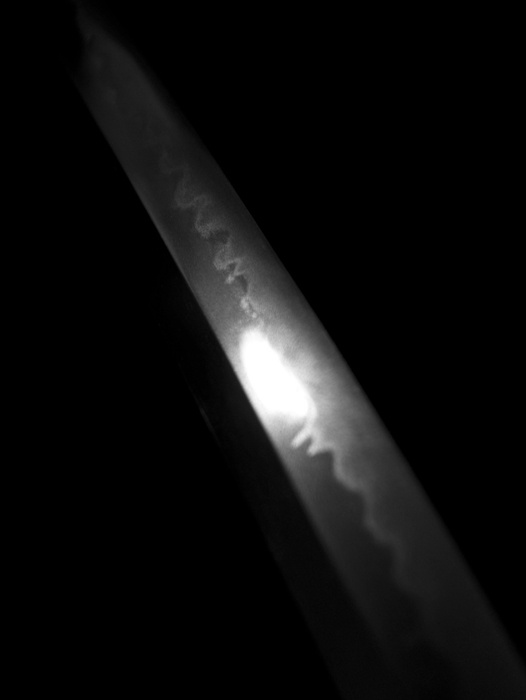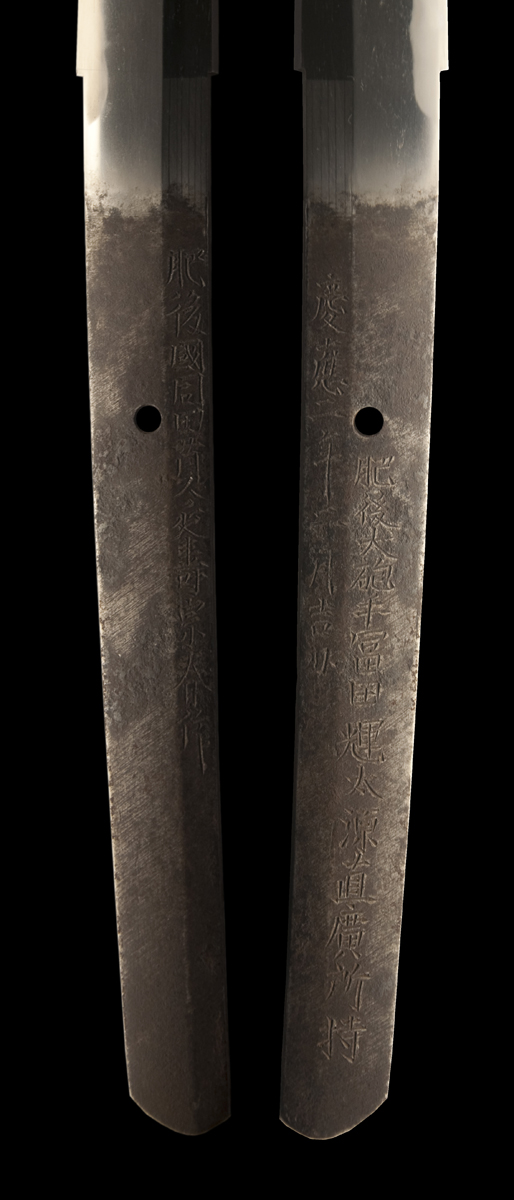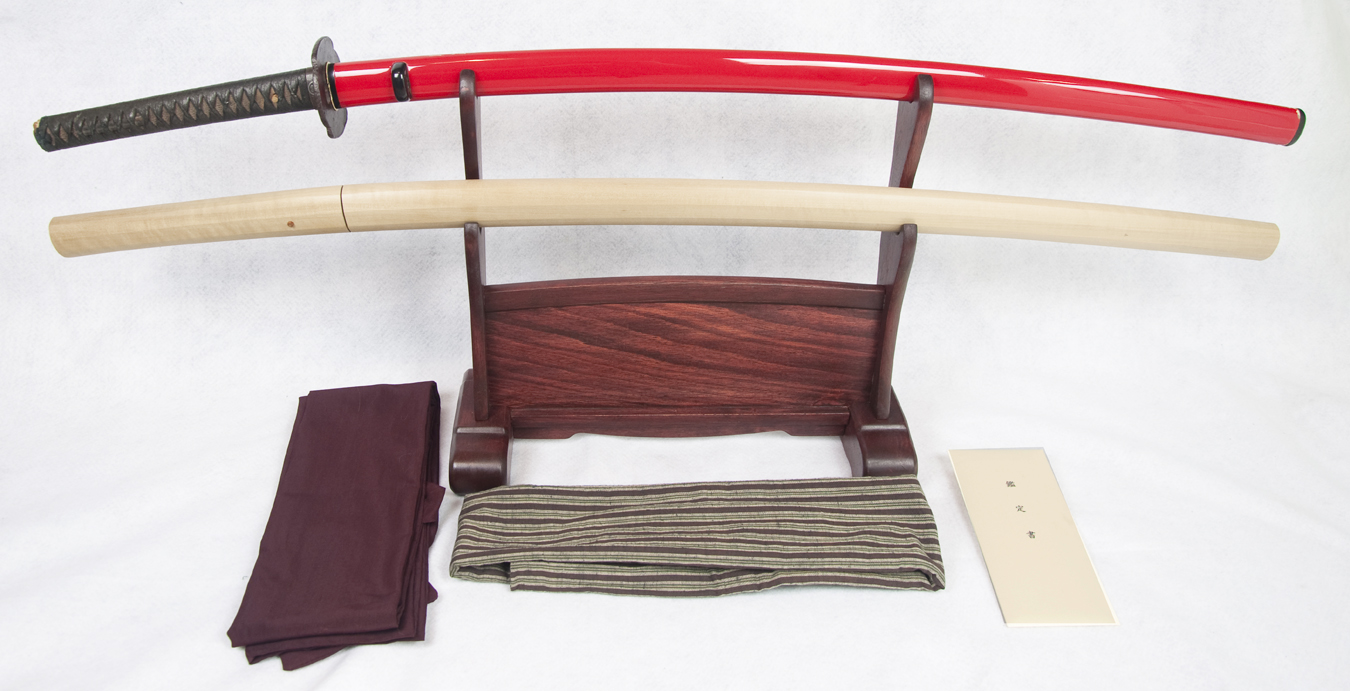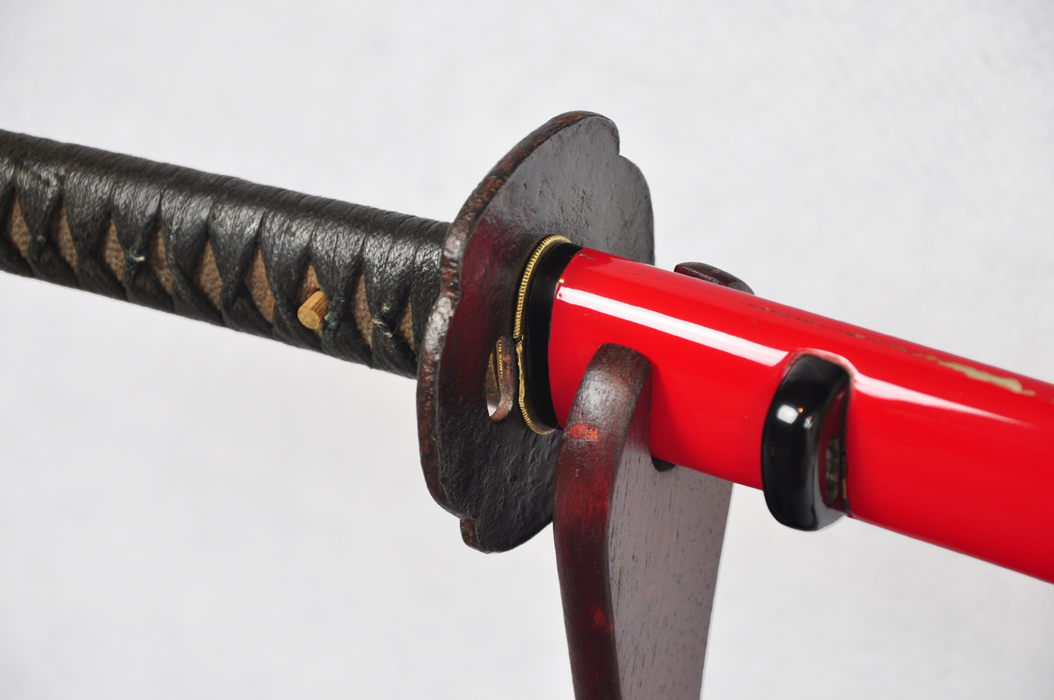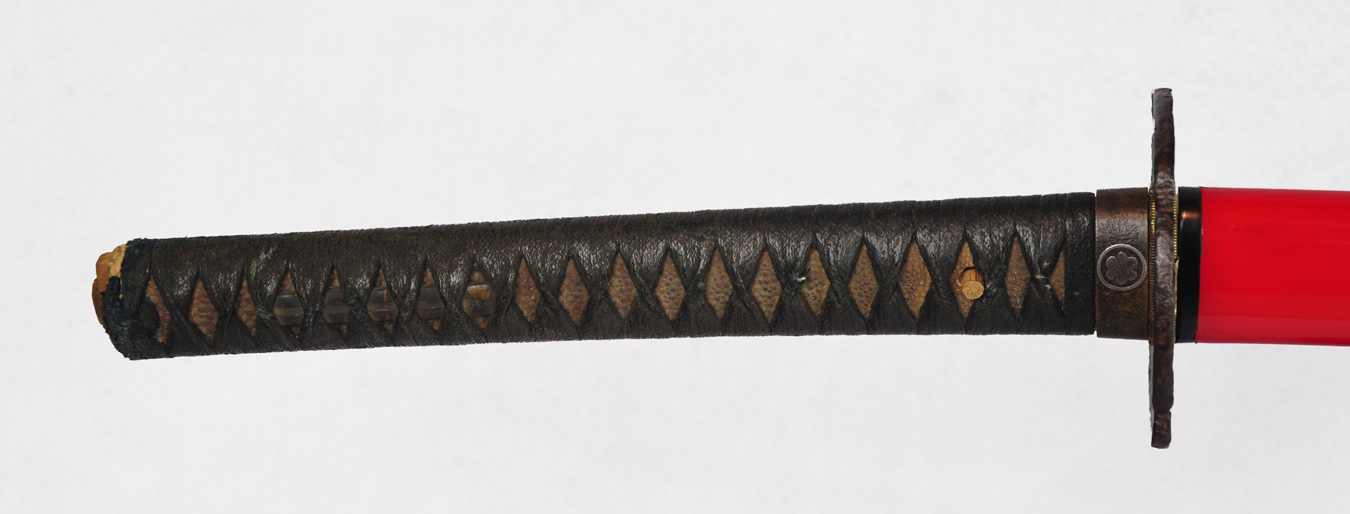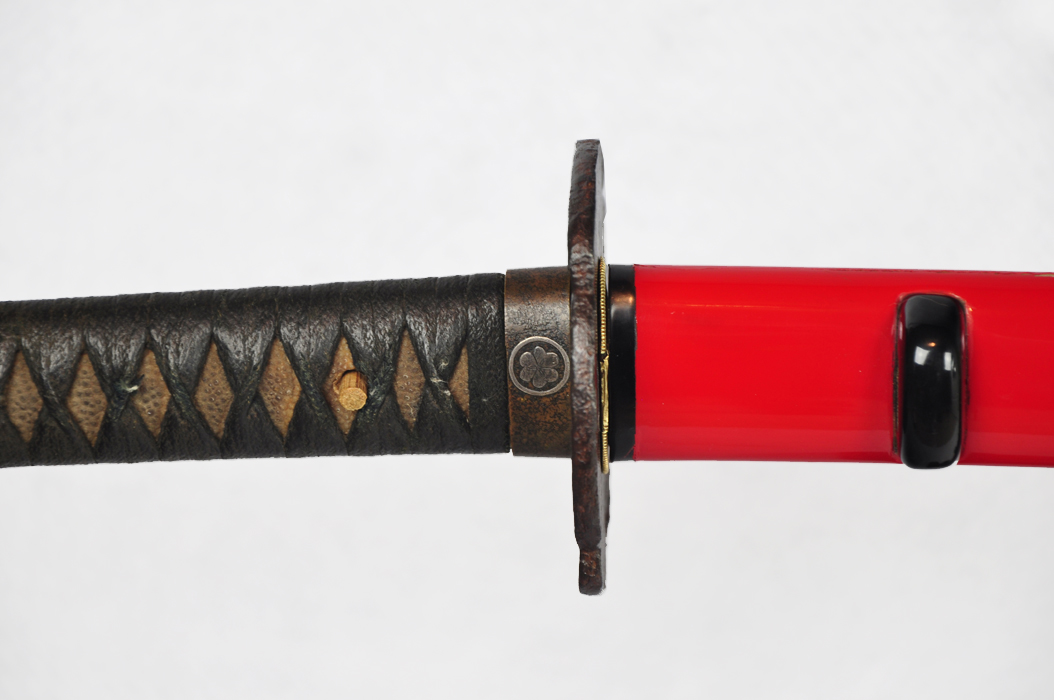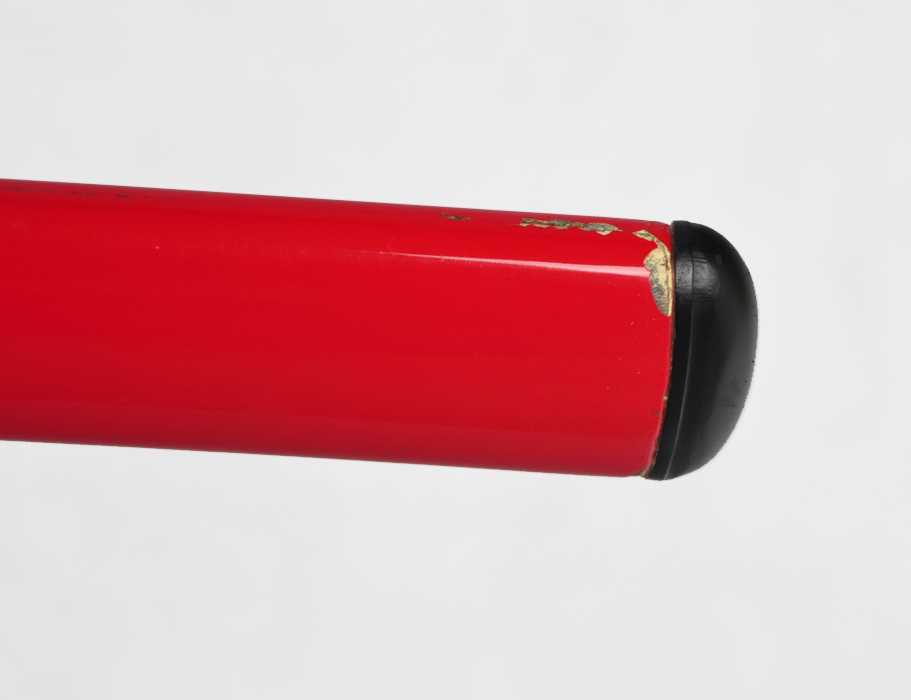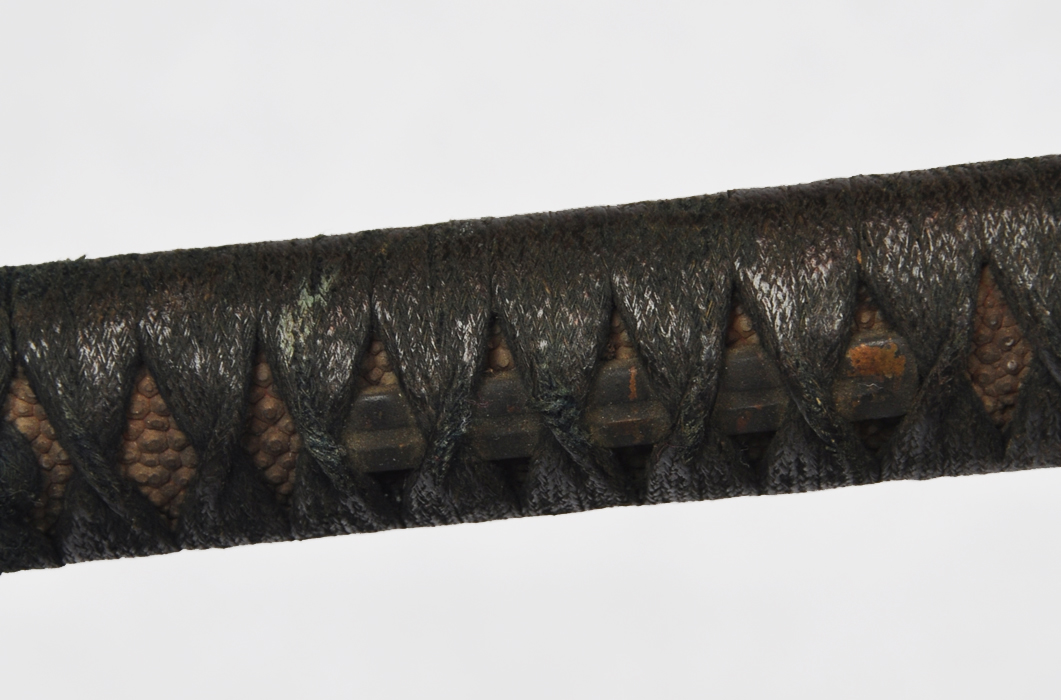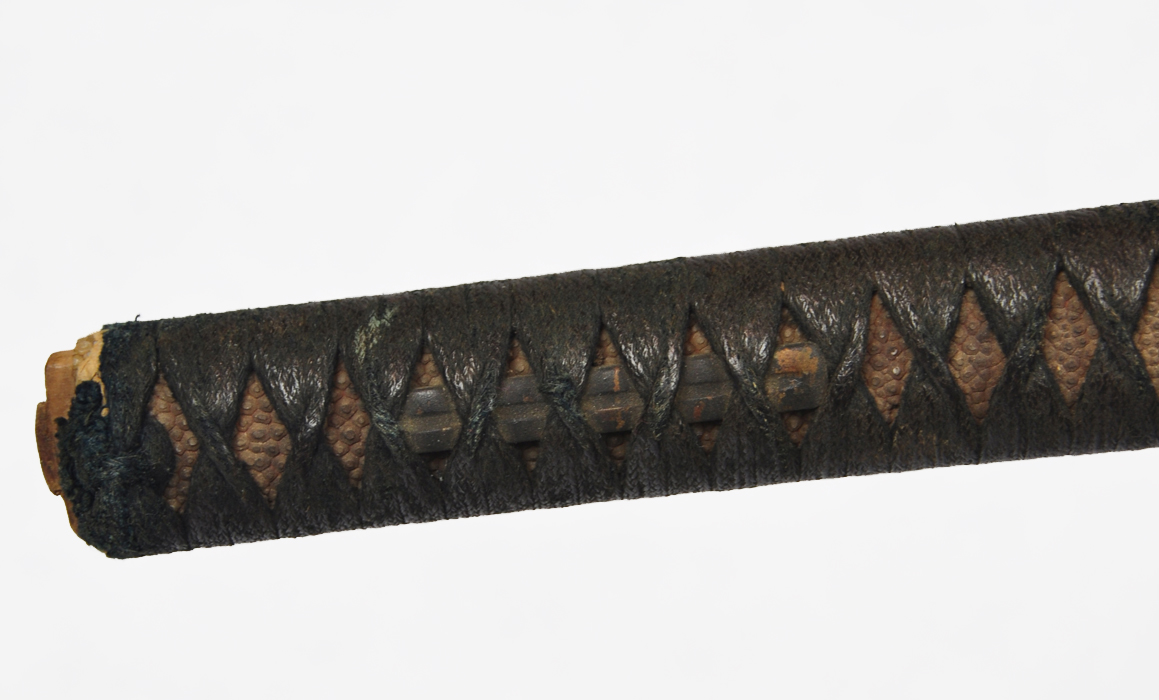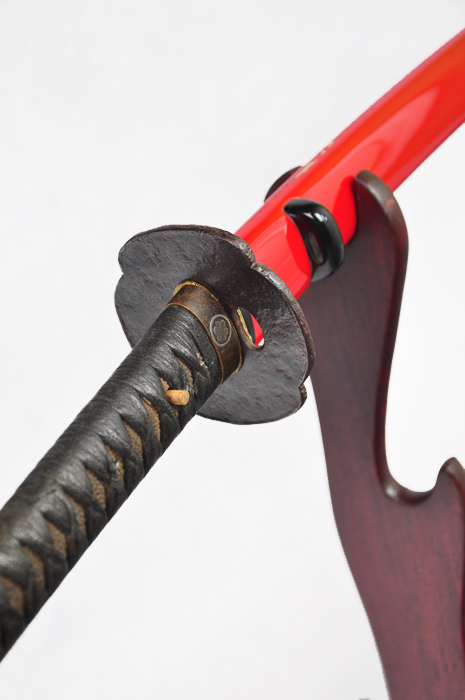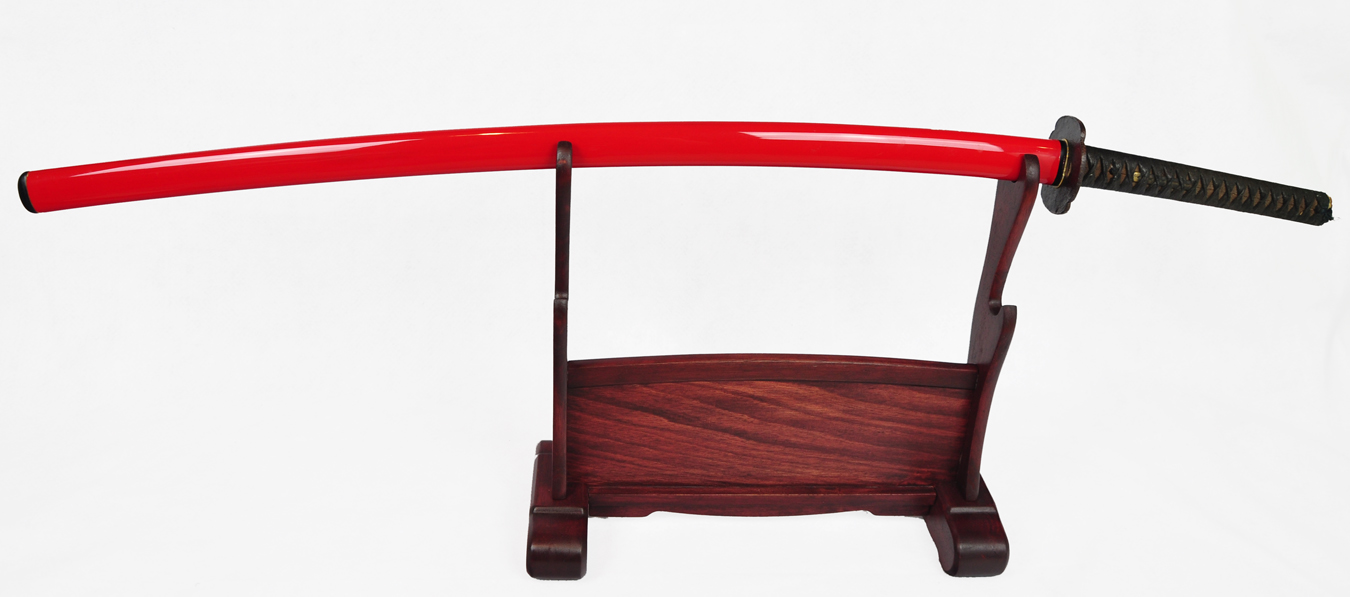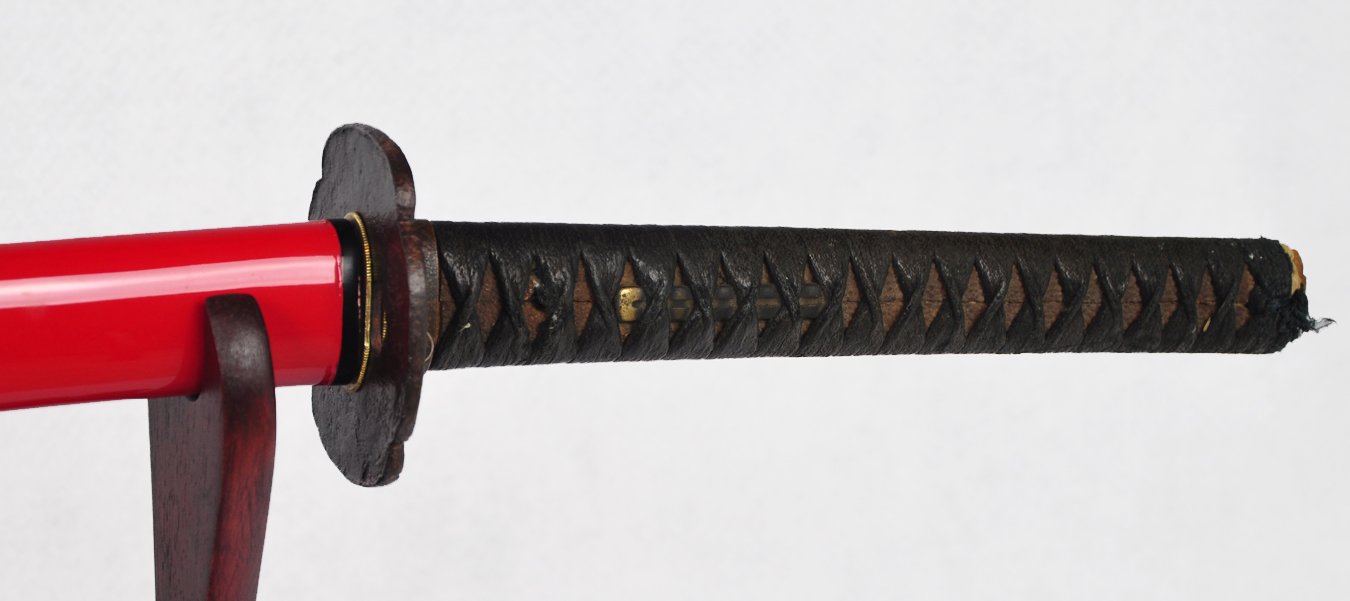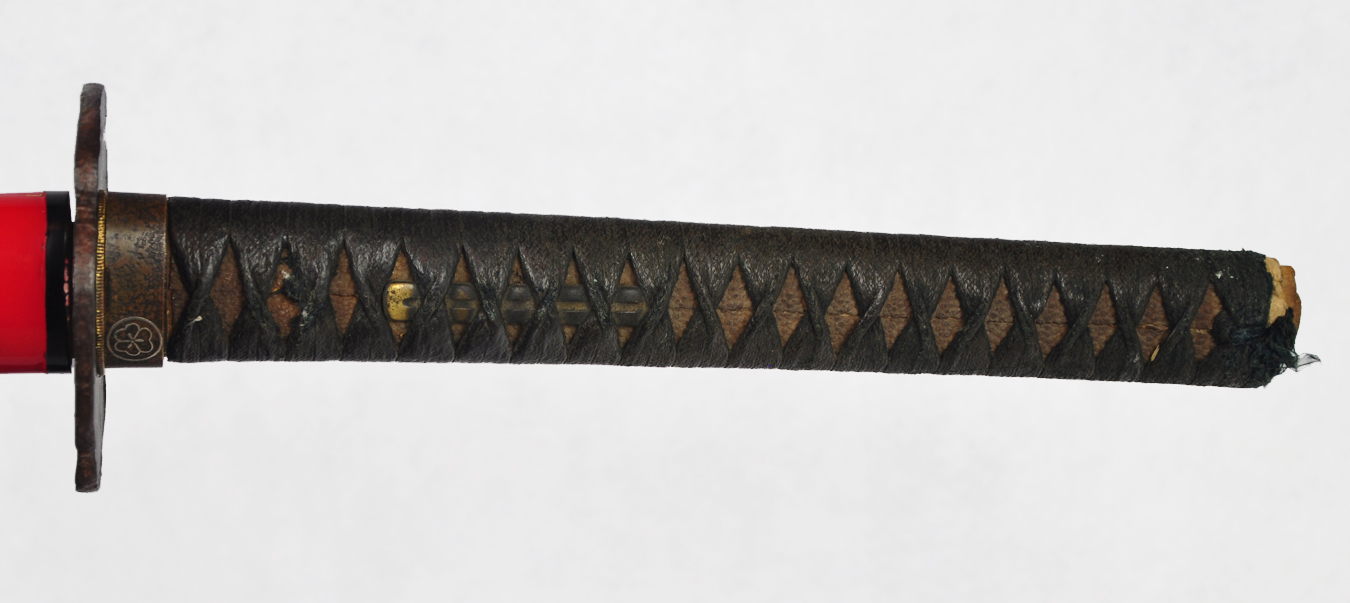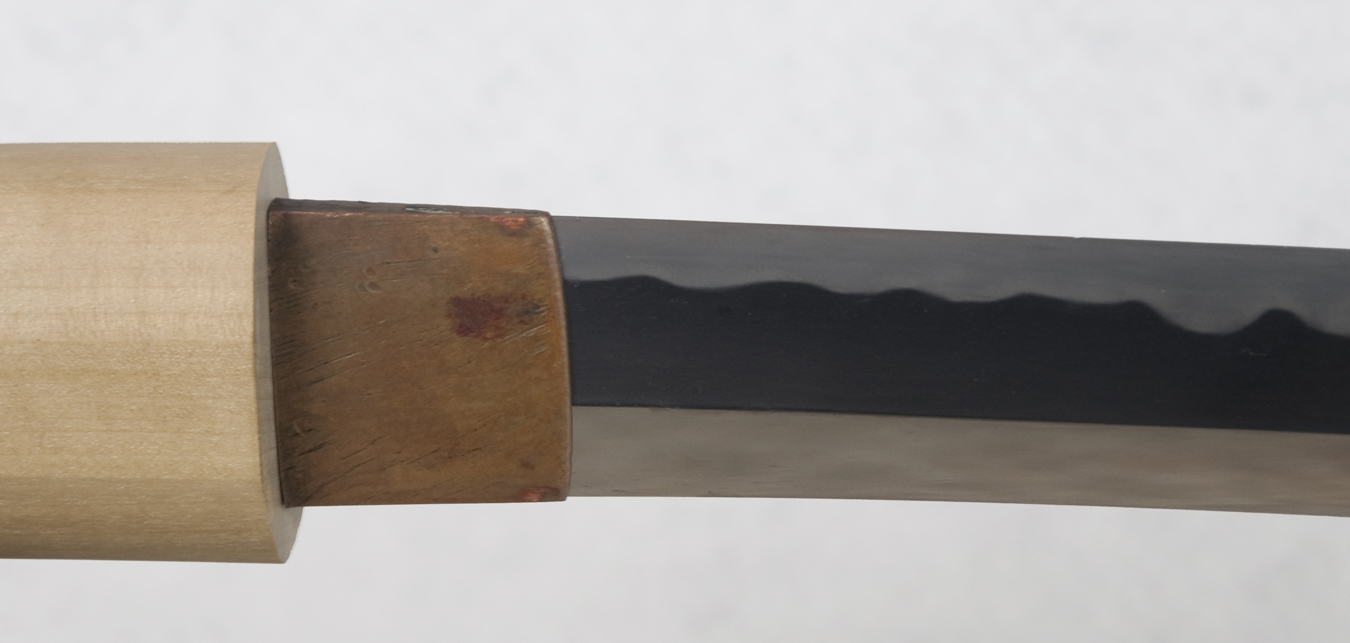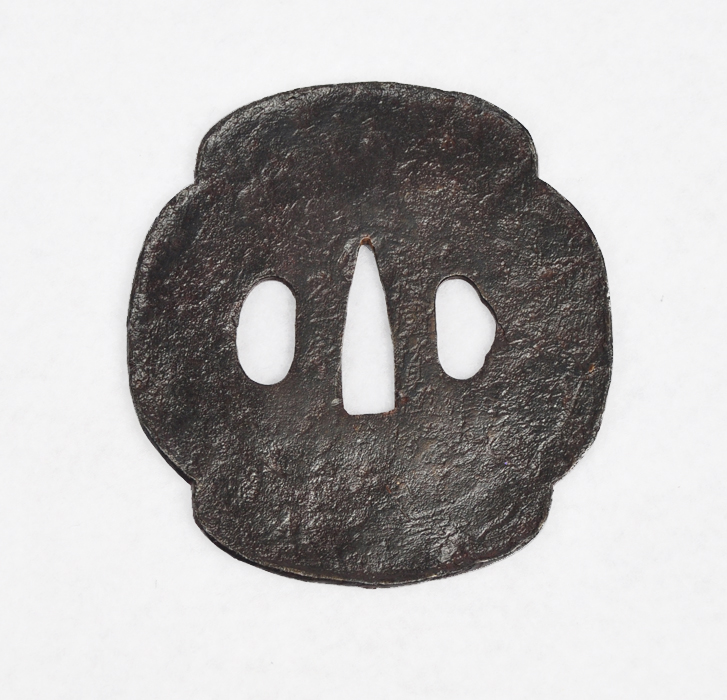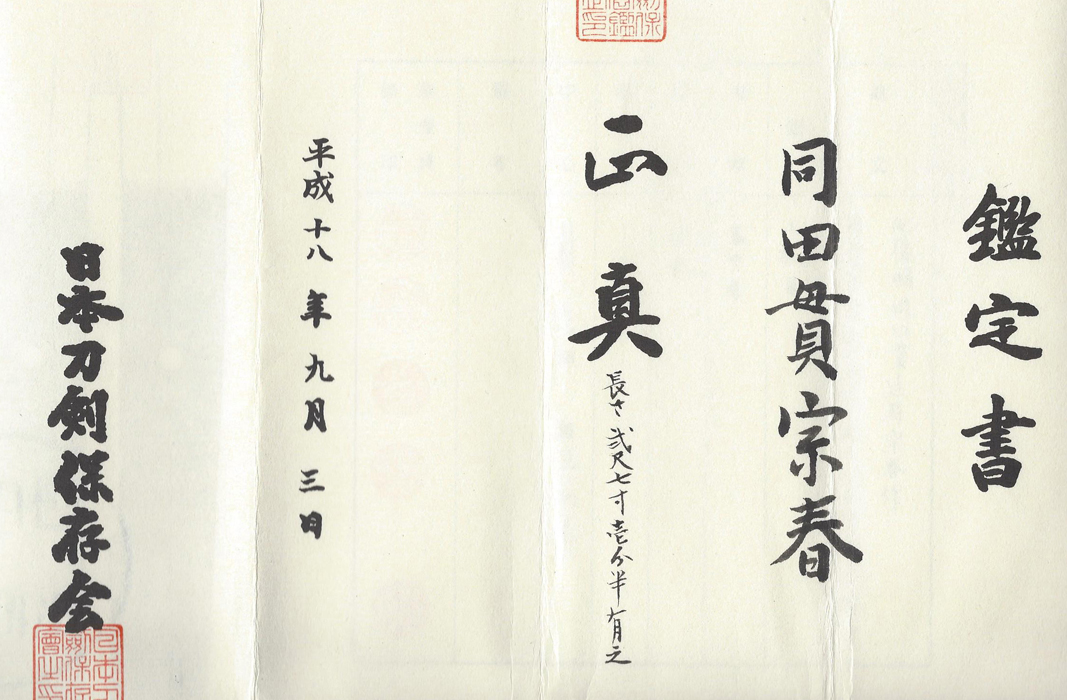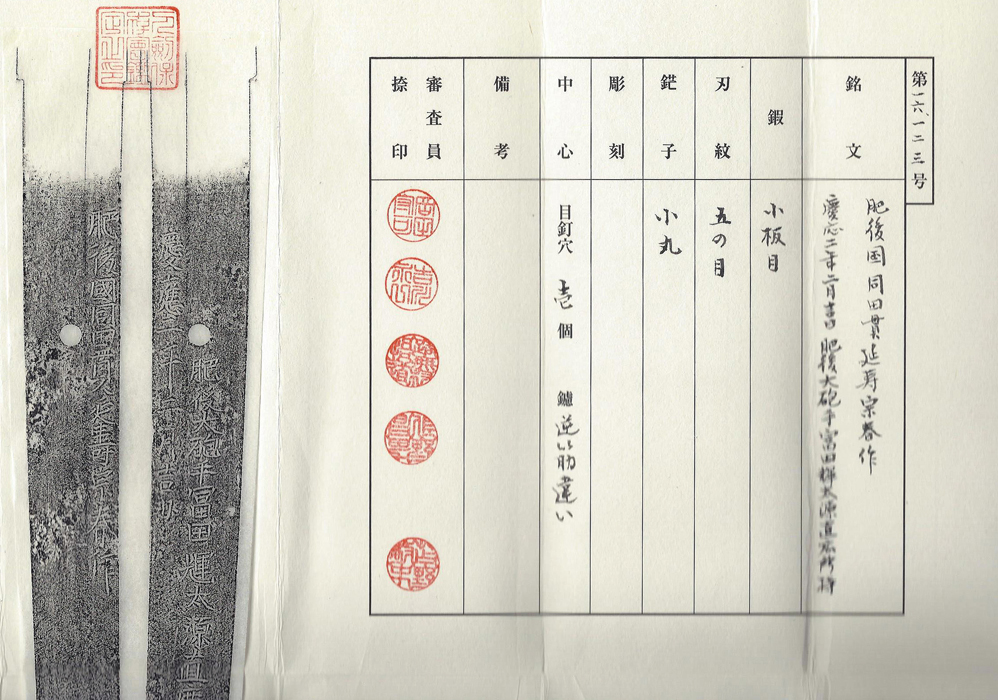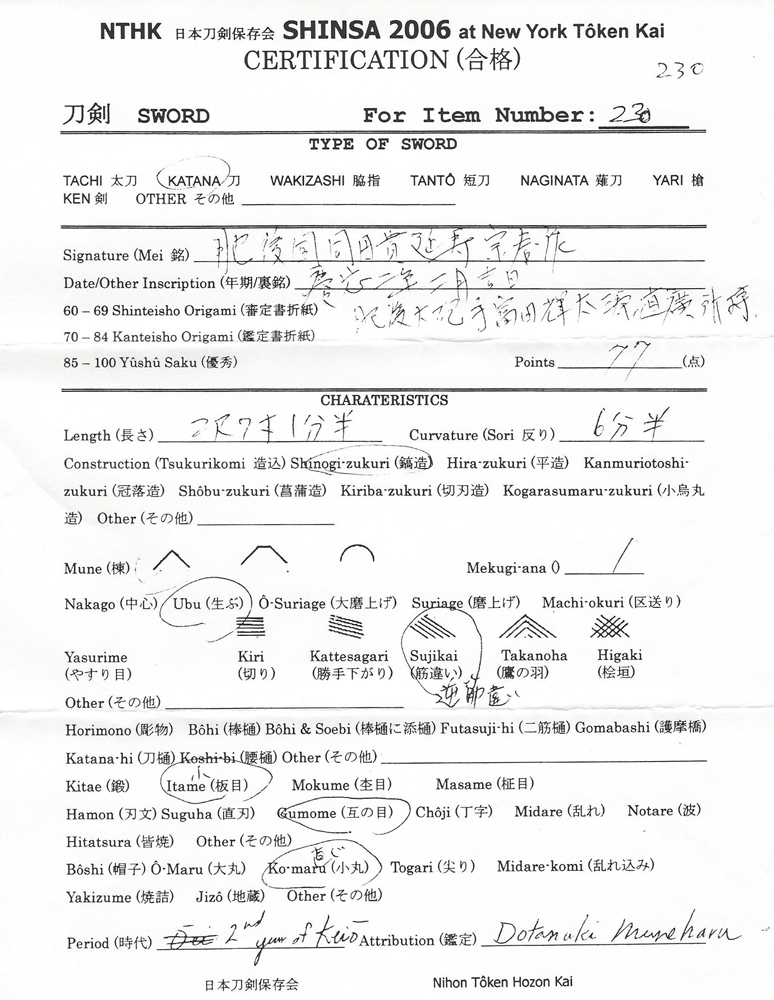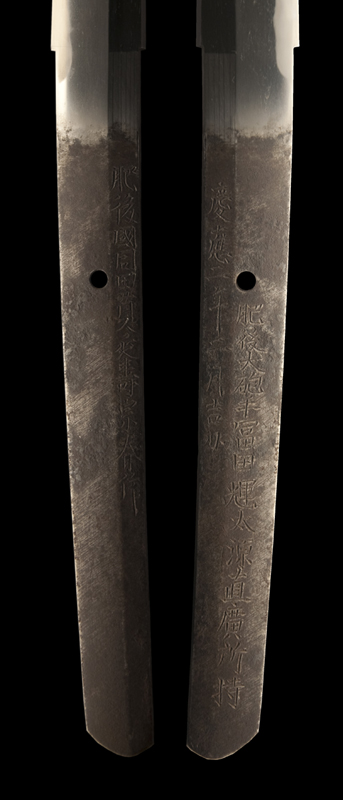|
| |||||||||||||||||||||||||||||||||||||||||||||||||
Hamon : Nie deki gunome midare in the koshi-no-hiraita style. The heads of the gunome are togari. There are strong ashi in the hamon as well as yo. Strands of sunagashi overlap the ashi and inazuma can be seen in monouchi.
Boshi : Midare komi that is deeply tempered and nearly ichimai in style. The return is short and togari. The boshi is tightly packed with bright nie.
Kitae : Itame hada that is nearly muji. The jigane is tightly forged and there is ji-nie.
About this sword : This is a grand katana by Dotanuki Muneharu. The Higo Dontanuki school has its origins in Koto times. Their roots reach to the Higo Enju school in the Kamakura period. The school flourished in the Muromachi/Momyama periods and agian in Bakamatsu times. In general, the Dontanuki school has a reputation for making no-nonsense, highly effective swords that cut well and were durable. It is said that Kato Kiyomasa, one of Hideyoshi's generals, choose Dotanuki smiths to accompany his campaign to invade Korea due to the excellence of their products on the battle filed. Dotanuki Muneharu's mature period was around Keio (1865-1868),the same period that this blade was made. He worked up to the Meji era. This katana is remarkably long. The nagasa is over 32 inches. The mihaba wide at 3.2 cm and there is an elegant taper to the saki. The sugata is very powerful but at the same time, conveys the elegance of the koto works it must have been inspired by. The workmanship of the blade shows control throughout the length, both in terms of the kitae as well as the tempering of the nioi-guchi. The mei of this Muneharu is wonderful. It states that this blade was made for Minamoto Naohiro in 1866 and that Naohiro was a cannon operator. The Higo forces were using imported canons from Europe and the United States at this time. It amazing to hold something in ones hand that spans the bridge of traditional Samurai arms with the Western war machine. This adds an element of appreciation to the sword that speaks beyond the quality of the blade itself. This katana is in full fresh Japanese polish. It has its original habaki and a newly made shira-saya. The original koshirae accompanies the blade. It could use restoration but is mostly intact. The saya has some chips in it and the kashira is missing. The tsuka-ito is broken were the fuchi would rest, but the remainer of the old ito is still intact. The menuki are of guttered rulers and appear to be urushi over copper. The guttered ruler was a tool used in the building/engineering. A handy and familiar tool for a cannon operator. The fuchi is copper with a silver mon and molted finish. The tsuba is a large iron example by one of the later Kaneiye tsuba-ko. There is a state-side tsunagi for the koshirae. This blade has a NTHK(NPO) kanteisho paper. It was submitted for papers before polish and received an impressive 77 point paper. Please see the work sheet shown below. The window for Yushu Saku (equivalent to NBTHK Juyo) submission starts at 78 points and blades that are not in polish normally receive fewer points than comparable blades that are. Quality blades of this length that are signed and dated represent the bulk of what many sword lovers are dreaming about. The wonderful history and provenance of this Muneharu combine with its length and quality to make an exciting opportunity indeed.
HOLD



